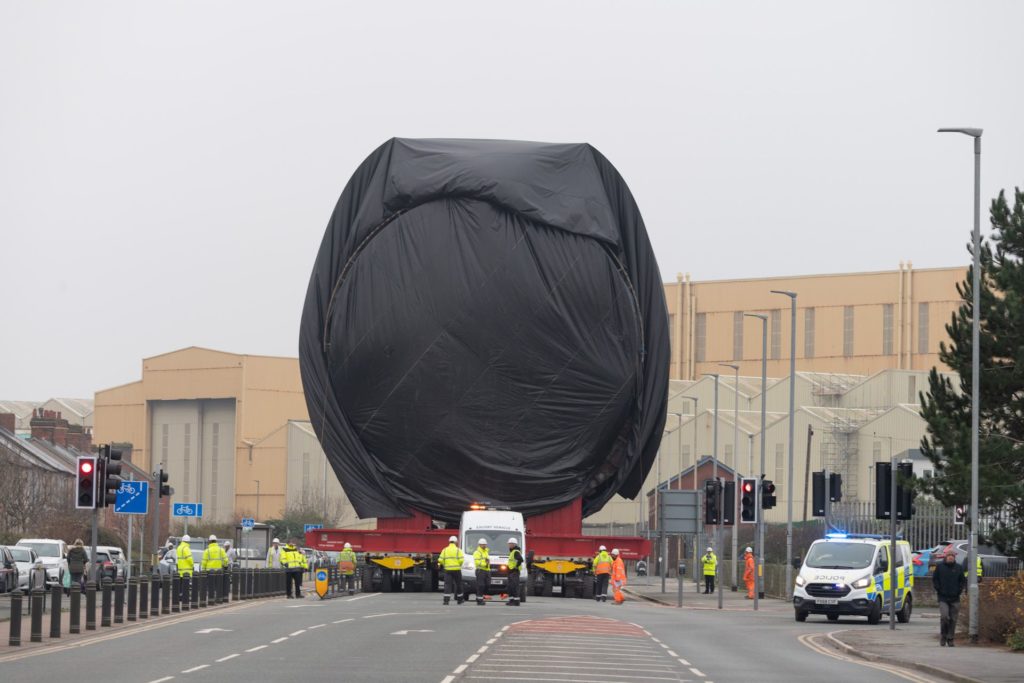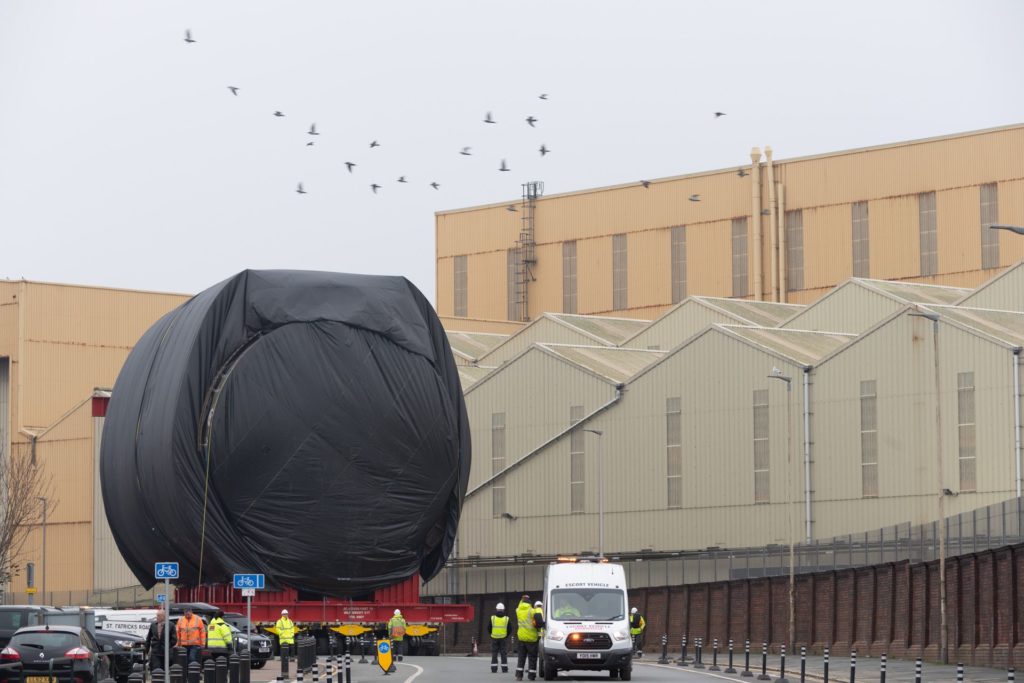Over £2 billion committed from the Government, forging stronger bonds with the supply chain and making greater connections with the public through social media – these are just a few of the great achievements made by the Dreadnought Alliance over the past year.
In May, the Ministry of Defence (MOD) awarded defence contracts worth more than £2 billion to BAE Systems and Rolls-Royce to begin Delivery Phase Three (DP3), the next and most significant phase of the future submarine nuclear deterrent programme – Dreadnought.
The investment is the latest financial commitment between the MOD, BAE Systems and Rolls-Royce, and is the initial investment within a planned overall total of nearly £10 billion over this next phase of the programme.
DP3 will see the first of Class, HMS Dreadnought, exit the Barrow-in-Furness shipyard to begin sea trials and will lay the foundation to deliver the remaining three Dreadnought boats to time and cost.
It is estimated that at its peak, the Dreadnought programme will support almost 30,000 jobs across the UK. In 2021 alone, it supported around 13,500 jobs in the Northwest of England and a further 16,300 over the rest of the UK, making a significant contribution to the Government's levelling-up agenda.
Bringing suppliers on board the mission
In July, a supplier conference helped over 130 organisations in the Alliance's supply chain to gain an even greater appreciation of the shared priority to deliver the first Dreadnought boat in the early 2030s.
Sir Peter Gershon, Chairman of the Dreadnought Alliance, said: "I want to emphasise that our number one strategic objective is to deliver boat one on time. Whilst we will retain a sharp focus on the later boats, nothing else on this programme is currently more important than delivering boat one on time and to spec."
Following Sir Peter Gershon's opening address, Rear Admiral Donald Doull, the Royal Navy's Senior Responsible Owner for the Dreadnought Programme, delivered a rousing speech which strengthened the message for everyone working on the national endeavour that every day counts.
Rear Admiral Doull said: "I don't want any sailor ever to have to go in with the same odds as the people they're going up against. It's our responsibility to make sure – as generations have done before us – they have the advantage in every aspect. In submarine warfare, that means we need to get the next generation of technology to sea and into the hands of the Royal Navy now."
The Alliance also presented its Dreadnought video at the supplier conference, which emphasises the enormity of the programme.
New Managing Director takes the helm
In August, Alex McMillan took over the role of Managing Director for the Dreadnought Alliance. He joined at a pivotal time in the programme – DP3 – the most significant and challenging next phase of Dreadnought.
Alex has a wealth of expertise and experience in engineering and manufacturing across various industries. A Chartered Mechanical Engineer and Fellow of the IMechE, he has led a number of businesses at the senior level. This includes a decade leading many major businesses in Rolls-Royce Civil Aerospace, with his final role having responsibility for the build and test of all Rolls-Royce engines globally.
Before joining the Dreadnought Alliance, Alex held the position of UK & Ireland Managing Director with Alstom, with responsibility for a large multidisciplinary team delivering major Rolling Stock Programmes.
Alex said: "The Dreadnought programme’s number one strategic priority is to deliver Boat 1, HMS Dreadnought, on time and the following three boats on schedule, to maintain the UK’s national security. This is an incredibly exciting challenge and we have assembled an excellent team of the brightest and best engineers, project managers and procurement experts."
Connecting people with the project
In September, the Dreadnought Alliance launched its LinkedIn feed to help communicate the programme to the public, as well as engage more people to join the team working on a truly national endeavour. Over 100 new starters were welcomed into the Alliance Programme Team in 2022, and there were 58 recognitions of employee excellence this year through the Alliance's SHINE Awards scheme (covering the themes: Safe and Secure, Healthy, Included, Nurtured, Enabled).
The LinkedIn feed has grown from a standing start to over 3,200 followers in a short space of time – with an audience spanning key employment sectors including defence and space manufacturing, aviation and aerospace components, shipbuilding, engineering, project management and business development. The feed has achieved over 167,000 unique impressions and almost 23,000 engagements with posts; including people sharing content such as a current festive feature which gives unique insights into what it's like to spend Christmas on board a submarine.
A moving experience
Another giant leap forward was the first pressure hull unit for Dreadnought Boat 1 being moved into BAE Systems Submarines' Devonshire Dock Hall in Barrow-in-Furness at the end of November.
Until now, teams in the Devonshire Dock Complex (DDC) have been working on other Dreadnought vessels and structures, but this is the first pressure hull unit to move in, ready to take its place on the build line.



The challenge of a generation
The Dreadnought Class will be one of the most complex machines ever built and it will operate in one of the most hostile environments on the planet.
As the largest Class of submarine ever built for the Royal Navy, each will boast 26.4 miles of pipework and more than 20,000 cables stretching 215 miles – further than traveling between London and Leeds.
The four Dreadnought-Class submarines, each the length of three Olympic swimming pools, will maintain the Continuous at Sea Deterrent (CASD), responsible for safeguarding our national security and way of life, for as long as the international security situation makes it necessary. The Dreadnought programme is a truly incredible national endeavour.